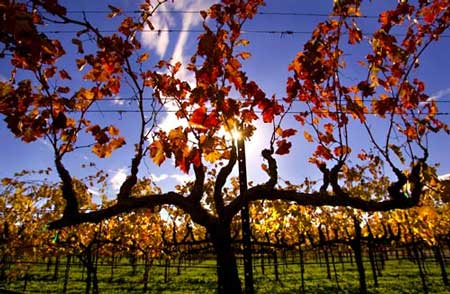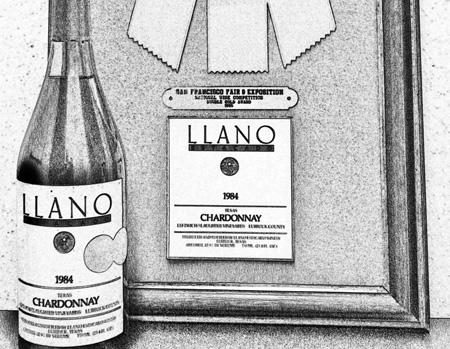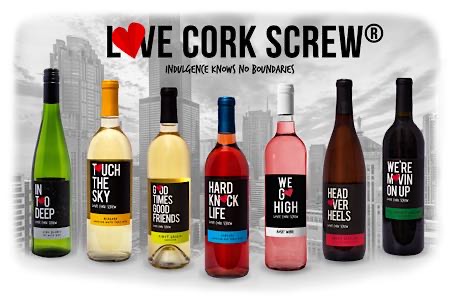
Five Things I’ve Learned about Napa Valley Wines That Apply to Texas Wines
Several weeks ago I attended the Napa Valley traveling road show that came through Houston, Texas. It was sponsored by Napa Valley Vintners. It was a mix of trade and consumer wine tasting events and educational programs held at Minute Maid Park home of the Houston Astros.
Over 40,000 acres of vines are now planted in Napa Valley that includes about 700 growers. There are a total of about 450 wineries. The breakdown of the wineries is as follows: 95 percent are family owned, 70 percent are less than 10,000 cases and 60 percent at less than 5,000 cases.
Unfortunately, it took me longer than expected to find my notes and my thoughts to post in this VintageTexas blog. I finally figured that the best way to present what I learned was to summarized the top five things I learned through my tastings and discussions with the Napa Valley Vintners that participated in this event. See below:
1. The one thing that is perhaps preeminent in Napa Valley is constancy of climate
Napa Valley offers growing conditions that offer little vintage-to-vintage variation. Most of their rain occurs during the winter period with little of it actually coming during the growing season. Growing conditions are normally warm to hot and dry. Occasionally, late frost will occur as will late season periods of intense heat (>100 F). When comparing this to the climate we have in Texas, Texas is affected by the tug of war between the continental and gulf weather. It’s no wonder that Texas growers and winemakers alike have to deal with the effects of weather variability. This results in varying harvest yields and parameters (Brix and pH) for the grapes. Therefore, the Texas winegrowing is more like that in Europe where vintage-to-vintage variation is greater than it is in Napa Valley.
2. Napa experience has shown that there is no substitute for low yields in the vineyard
Low vineyard yields (tons/acre) results in higher quality grapes that make wines with more intense flavors and aromatics.However, it all comes with a price. Low yield means high priced grapes and there’s no way to get around it. These high priced grapes makes it impossible to make a $10 bottle of Napa Valley wine. The players in Napa Valley have made a decision not to compete with the $10 bottles of wine from around the world. Texas still needs to make a decision if it wants to try to make its name with cheap “jug” wines or with smaller lot premium offers. However, if we choose the path to premium wines, it means that wineries will have to accept high prices for grapes, get their road show on the road, and start to prove to consumers that they actually do make world class wines. It’s high time!
3. Napa Valley wineries are NOT just good marketeers; they actually DO make good wine
I’ve heard people say “Napa Valley is only about marketing”. I will agree that they have good marketing, but in the case of Napa Valley it all starts with the fact that they are making damn good wine. How does Napa Valley do it? Well, they focus on a few grapes that actually like growing in Napa Valley. When the grapes come into the winery, they have the characteristics that allow them to make wine all by themselves. Texas has to find its “sweet spot” in terms of grape varieties that like growing here, do it with minimal effort and come to the winery with “numbers” that make high quality wine a breeze to produce.
4. What’s been Napa Valley’s most recent development? Site selection
While most of us have heard the story about over-oaked Chardonnays and high alcohol Pinot Noirs and Cabernets, few understand that Napa Valley growers have been focusing a lot of effort recently finding specific vineyard sites that optimize the harvest parameters for certain grape varieties. For example, his includes finding cooler sites for Chardonnay, Sauvignon Blanc and Pinot Noir while leaving the warmer vineyard sites for Cabernet Sauvignon. You might think that this type of thing may be a long way off for Texas viticulture, but why shouldn’t we start to think about it now? What works best on the Texas high plains, central hill country and southeast Texas? This shouldn’t be rocket science any more. Just because you want to grow Cabernet or Tempranillo doesn’t mean that your vineyard site is a place where it will provide quality fruit.
5. Napa Valley Cabernet is teeth (and shirt) staining stuff. Hallelujah for Oxyclean!
About a half hour into the trade tasting, I set down my glass of wine to take a photo of the tasting. However, I set it down on the edge of a counter that had a bevel on it. It started to fall toward the person next to me. In a flash, I made a dive for the falling glass to snatch it back toward me. Well, to make a long story very short, I managed to cover my shirt with a rain of red wine. Luckily, I was wearing an overshirt. I simply removed the shirt (stashed it under the buffet table) and finished the tasting in a my undershirt (a nice blue one). The good news is that Napa Valley wine is no match for Oxyclean. As a pre-soak it’s wonderful stuff and I’ve proven that it works especially well on red wine stains even if it was two hours later when I got a chance to soak my shirt.

But, Gosh….Napa Valley is such a beautiful place to grow grapes, as is Texas.



Your points are right on target. I had to laugh at the last one. Always wear black to a tasting event! And those little toothbrushes with the cleaning agent already on them are great for getting rid of the purple-toothed monster.
Sounds like a great trip to Napa. Interesting comparisons that you make to Napa area and Texas climate. Obviously Texas gets hit with some nasty weather but the potential is obviously here!
We’d love to see more signature, premium wines being produced out of Texas. Afterall, Texas has been producing wine over 100 years longer than California. I’ve always heard that Texas wine is comparable to Portuguese and Spanish wines due to the hot, dry climates. Wonder if that is where our niche could be found or rediscovered.
Actually, I didn’t go to Napa. They came to me in Houston with their wine tour.
I know that the reputation for Texas wines will be made with wines whose vines originate with Mediterranean DNA. We are just more like that part of the world than we are Bordeaux or Burgundy. Look for Texas reds made from Tempranillo, Touriga Nacional, Mourvedre, Sangiovese (with the right clones), and whites from Viongier, Vermentino, Roussanne and Muscat. Also, don’t forget we have great wines being made now from Blanc Du Bois and Black Spanish our Texas home-base Native-American varietals.